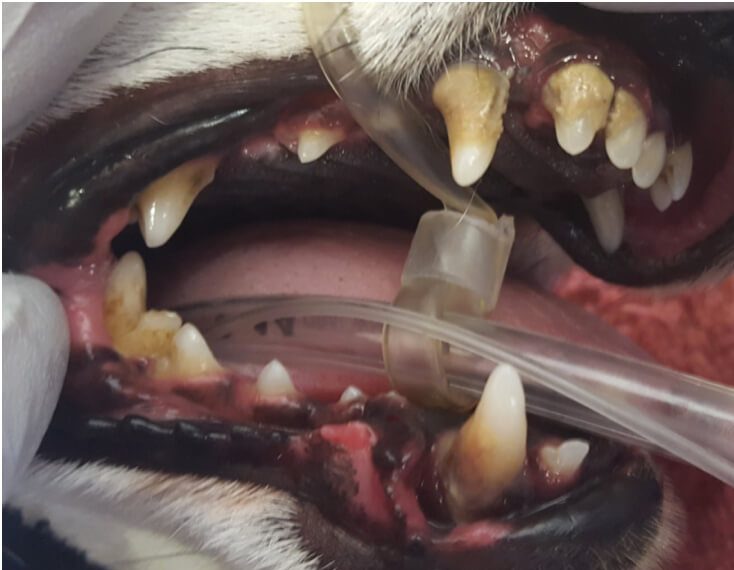Limited time offer: $100 off any new wellness plan enrollment. Schedule a Visit Now!
Pet Dental Care
Periodontal disease, a dental-related disease, is the most common ailment affecting dogs and cats according to the American Veterinary Medical Association. It is estimated that more than 70% of cats and 80% of dogs develop gum disease by the time they’re 3 years old.
Plaque builds on teeth every day. If it is not removed, it mineralizes and hardens within a mere two days, forming calculus or tartar. The gradual buildup of plaque near the gum line eventually leads to the development of periodontal disease.
Periodontal disease can have a significant impact on the overall well-being and general health of your pet. It is an infection that can harm your pet’s teeth and gums, and it can also lead to further life-threatening health issues, including heart and kidney disease.

Before

After
Look out for these symptoms that may indicate dental disease in your pet:
- Discomfort or reduced appetite during chewing
- Difficulty swallowing
- Loose or missing teeth
- Swollen or red gums, pawing at the mouth, and pain or bleeding when gums are touched
- Presence of yellow-brown plaque near the gum line
- Cracked, broken, or excessively worn-down teeth
Taking preventive measures for dental care is an essential component of your pet’s overall wellness. During each examination, our veterinarians conduct a thorough dental assessment. We employ a grading system to assess the extent of dental disease in your pet’s mouth. If any dental issues are detected, our veterinarian will discuss suitable treatment options with you.
At-Home Pet Dental Care
Taking care of your pet’s teeth at home is a crucial step in maintaining their oral hygiene and preventing dental issues. During your pet’s next examination, we will guide you on how to effectively care for and brush your pet’s teeth in the comfort of your own home. Our knowledgeable staff can also provide you with recommendations for specialty pet foods and treats that promote excellent oral health. If you have any further inquiries about at-home dental care or our professional dental care services, please don’t hesitate to reach out to us.
If recommended, a comprehensive professional dental exam and cleaning will typically include the following:
- Anesthesia and monitoring to ensure your pet’s comfort and safety
- Meticulous cleaning of your pet’s teeth using ultrasonic scaling and probing
- Polish to delay the accumulation of tartar
- Antibacterial flushing and fluoride treatment and to strengthen the teeth and combat bacteria
- Radiographs, extractions, and additional treatments if necessary
Our standard digital x-ray unit enables us to capture detailed images of your pet’s teeth and gums during the dental exam. This allows our veterinarians to examine the teeth, roots, gums, and surrounding bones to promptly identify any bone loss or hidden diseases that may be present.

Schedule An Appointment
We’re committed to providing quality pet care that sets the standard for veterinary hospitals. And our service begins the minute you schedule an appointment with us.
Still not sure? Learn more about us.